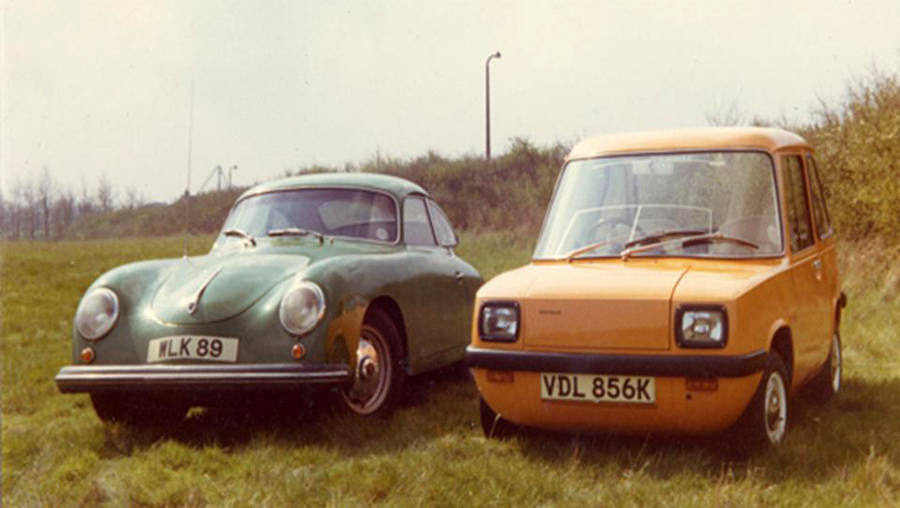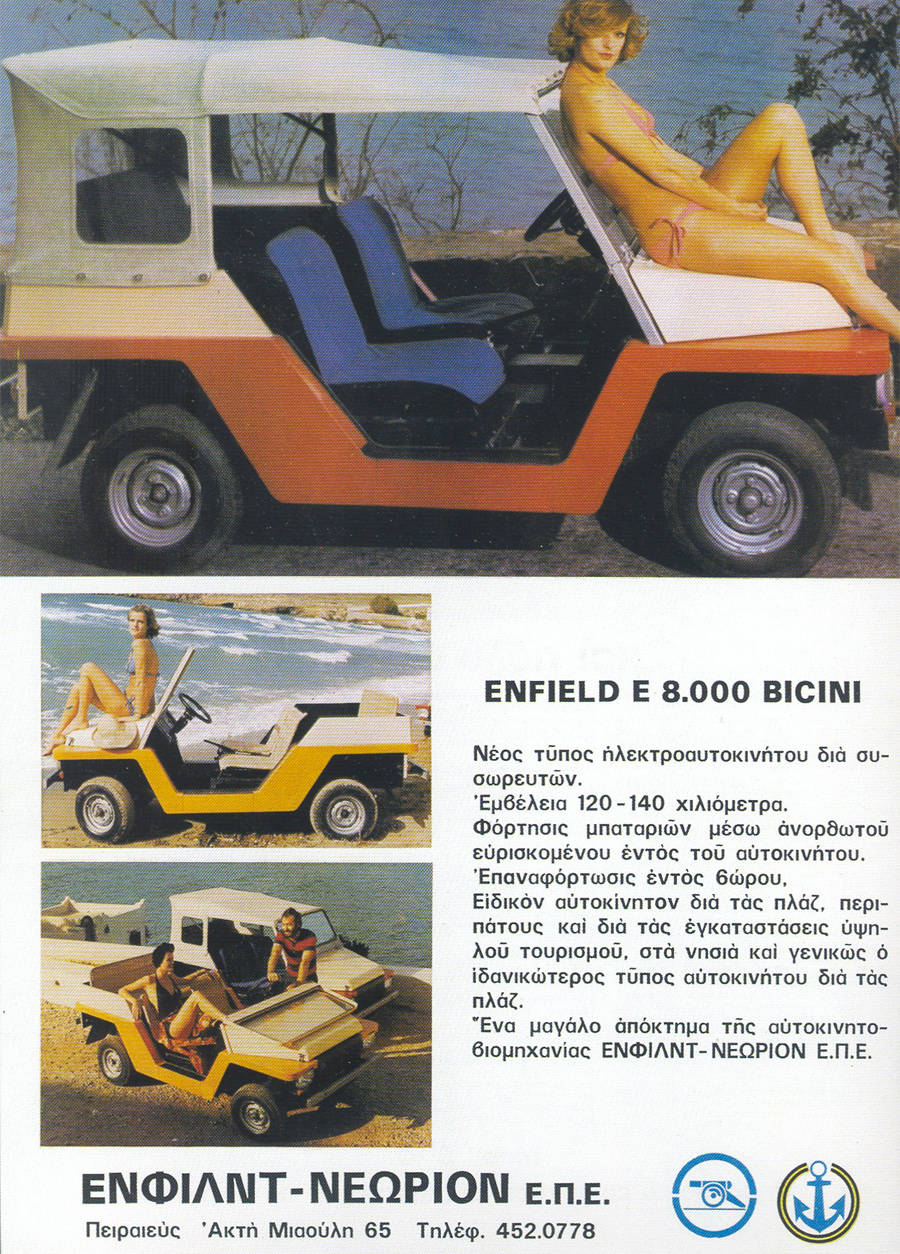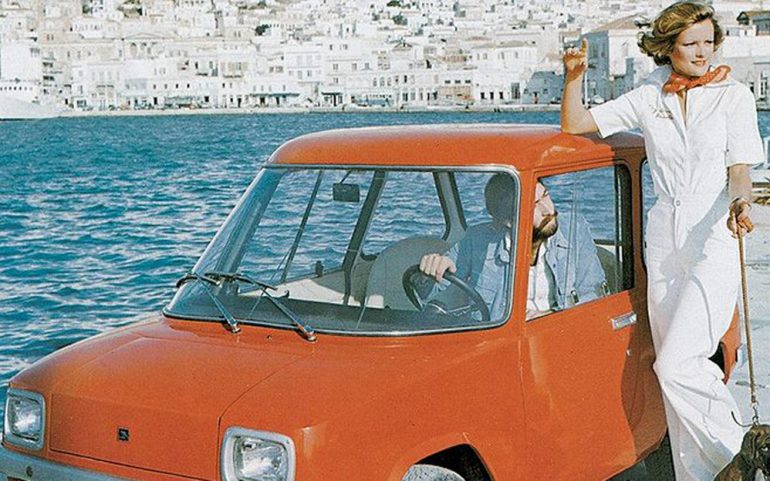There are many cases in the fields of innovation, production, industry in Greece that a big "what could happen if?" Hovers over them. And where "if" we can put various theoretical schemes. "If there were no political pressures", "if the plan had been created on a more solid basis", "if the bureaucracy was not so ruthless" or "if Greece did not have the tendency to bury everything that could take it out of disrepute".
The case of his factory Neorio in Syros and the production of the first modern electric car is perhaps one of the most characteristic examples where all the above theoretical figures were grounded in a story of the birth of a pioneer and its rapid "death".
The Enfield 8000 is now a legend, a milestone in world car history with many at times trying to rebuild and transform it and many wondering how the history of motoring would have evolved.
Enfield, a well-known company in the United Kingdom for the production of ammunition and in particular rifles, was based on the Isle of Wight. From the late 60's the company Enfield Automotive entered the production of electric cars. The two models that came out of its production were the Enfield 465 and Enfield 8000. The latter was essentially an improved version of the former.

The Enfield 8000 (also known as the E8000 ECC - "Electric City Car") was equipped with a 6 kW electric motor and an aluminum frame. The construction rate of the Enfield 8000 was one per week. The model evolved in the UK as the company won a tender from the Electricity Council (the UK Electricity Authority) for the supply of around 100 vehicles.
The model had successfully passed all the prescribed tests in Britain, and as early as January 1973 a contract was signed between Electricity Council and Enfield Automotive.
It was designed by John Samuel, John Acroyd and Konstantinos Adraktas, President and Technical Director of Enfield.
In 1973 and in the context of the global oil crisis, the shipowner Giannis Goulandris buys the company Enfield and decides to transfer the production line to the Neorio Shipyards in Syros, which he had bought together with his 2 brothers a few months ago and the headquarters in Piraeus. The name of the new company was "Enfield-Neorion Ltd."

The acquisition of Enfield by Goulandris was a personal bet for him. Like the transfer of production to his country. The Andrian shipowner had a vision for the cars to be produced by Greeks: "The company belonged to the Greeks, the car was designed by Greeks, so it should be produced by Greeks as well," he said. Goulandris.

Konstantinos Adraktas was strongly opposed, however, to such a move. He maintained his reservations about the transfer of the production line to Syros and was in favor of promoting production in countries that had already shown interest in developing electric cars, such as the USA. As a result of his fight with Goulandris, he resigned.
John Acroyd moved to Syros. To staff the factory, Goulandris hired local craftsmen, all shipwrights, while no one had experience in creating vehicles. A small production unit of car manufacturing was created inside an old spinning mill, next to the shipyards of Neorio in Ermoupolis of Syros while the company's headquarters were in Akti Miaouli in Piraeus.
By 1976, about 112 vehicles had left Syros, none of which managed to circulate in Greece. As reported by people who worked at Neorio when a test drive was needed, they put a piece of cardboard in the box that read "test" and simply hoped "they would not be arrested by the police". And this is because the Enfield 8000 did not get a press license to be released in Greece…

The E8000 was the first world-wide electric car to have a unique aerodynamics. It is indicative that its aerodynamic coefficient was lower than Porsche models: 0,29. While it had an elegant design. Its frame was aluminum (anti-corrosion), while the interior design standards were similar to the Rolls Royce (eg leather seats). Two versions of the model were released: The "Bicini" and the "Miner".
All E8000s were launched in the United Kingdom. The official reason that he never received approval for its circulation in Greece was his inability to tax. The Bicini and Miner versions were of Greek design by the designer G. Michael based on the same electromechanical parts, but they never passed a crash test. The first car built in Syros was released in October 1973.
The executives of the company made ambitious efforts to promote its circulation in Greece but there was no response from the public regarding its taxation. In fact, there was a blow to public companies and the Olympic Air Force. But such a plan did not work.

Its high acquisition cost vehicle, His reduced autonomy and the transition period from the junta to the Metapolitism were the main deterrents that led to the lockout of the Enfield 8000 factory.
The political and economic background of the time, however, speaks of a contradiction in terms of the production period and the wider economic context of the time. The period of the oil crisis would seem ideal for the development of an electric car. And that was what Goulandris was aiming for.
However, the shipowner's main business activity was tankers, which may have pitted him against the oil lobby. And when he had to choose, the scoop leaned towards the fuel.
As the engineer Alexandros Marantzidis had stated in news.gr "the main reasons why the production stopped and the factory closed were the delays that occurred at the customs. This means that several days passed before the factory managers received the spare parts coming from abroad. Also, Enfield never received type approval from the Greek state.
Other rumors of the time said that Goulandris brought the production to Syros, because he had signed good contracts with the oilmen of the time and did not want the agreements to be disturbed by the production of a electric car. Some argued that in the midst of the oil crisis, the only ships in circulation were the Goulandris».
Thus, under pressure from many quarters, another capital of the automobile industry in the country was led to its death.
In 2015 in the exhibition Made by Hellas by the Hellenic Automobile Museum was exhibited an Enfield 8000 which belongs to the museum. A car now exists in the Industrial Museum of Ermoupolis.
